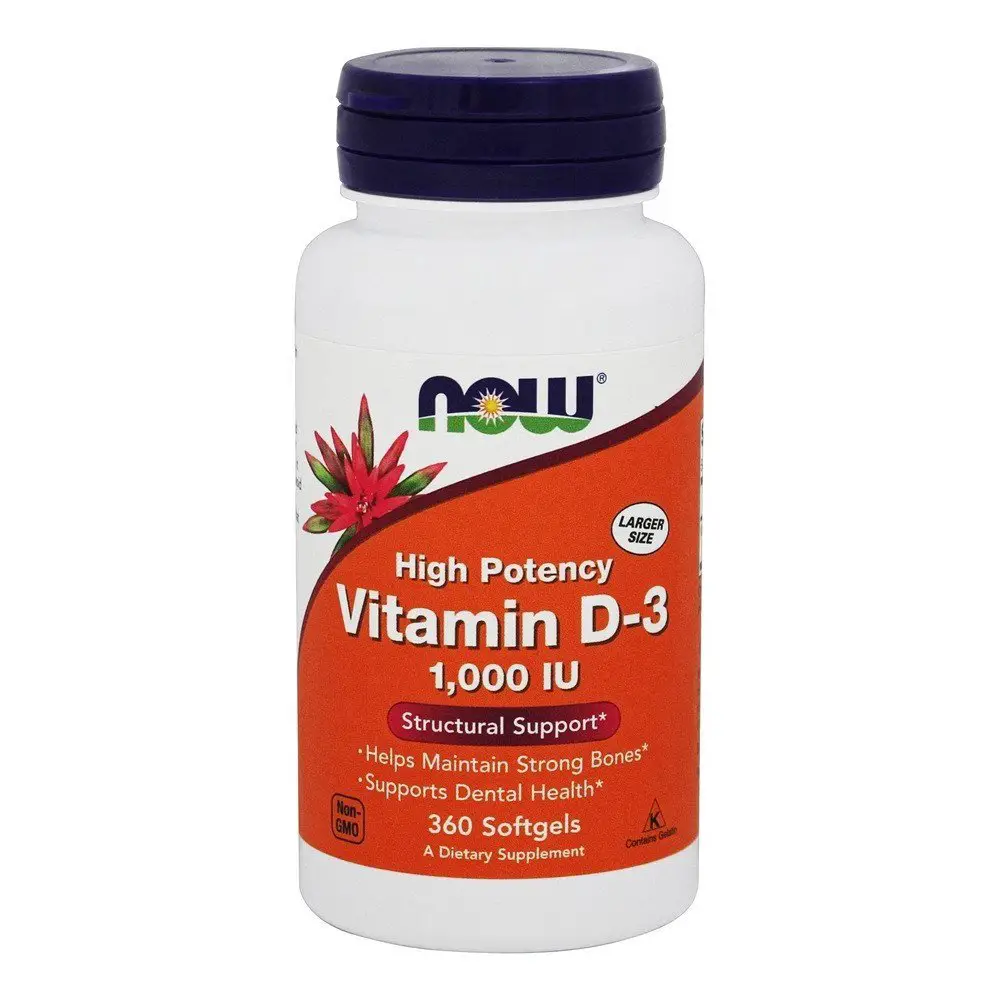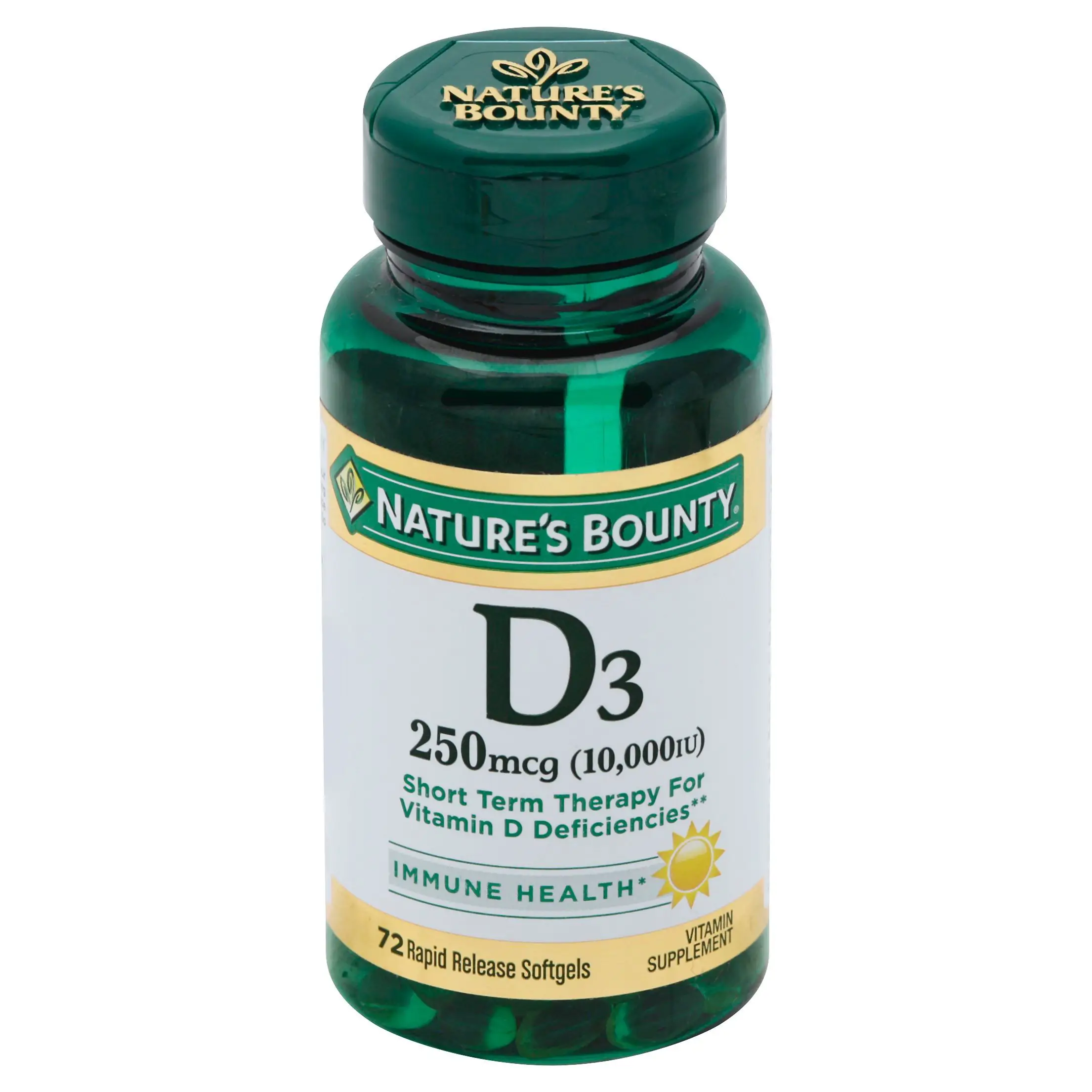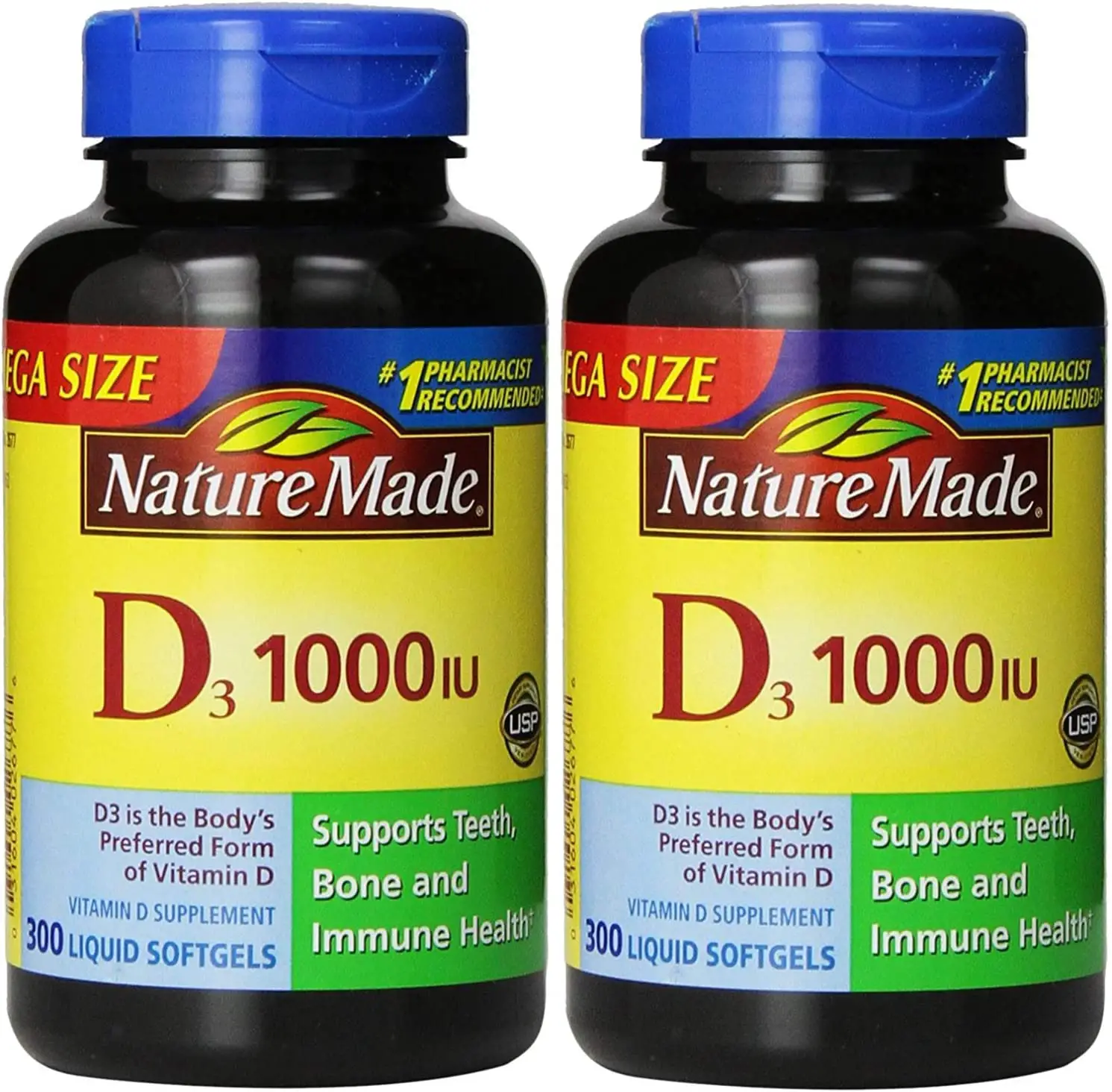What Are The Main Differences Between Vitamin D And D3
The term vitamin D is kind of a misnomer because you will not find anything labeled simply as vitamin D in a pharmacy vitamin aisle. Rather, your choices will be vitamin D2 or vitamin D3 . Generally, when one mentions vitamin D, the implied selection is vitamin D2. For the purpose of this article, when vitamin D is mentioned, it will refer to vitamin D2. The names can be confusing, because many times, patients go into the pharmacy looking for vitamin D and are surprised that there is a D2 and a D3.
Vitamin D comes from plant sources, such as wild mushrooms, as well as fortified foods, such as milk or cereal products. Its strength is typically measured in international units, which is abbreviated as IU on labeling. The 50,000 IU capsules are prescription only, while lower strengths are available over-the-counter. Vitamin D is less expensive to produce and therefore is the form most commonly found in fortified food products.
Vitamin D3 mainly comes from animal sources such as fish oil, fatty fish, liver, and egg yolks. When your skin is exposed to sunlight, it produces vitamin D3. For this reason, it is sometimes referred to as the sunshine vitamin. Its strength is also measured in international units. All forms of vitamin D3 are available over-the-counter.
| Main differences between vitamin D and D3 | ||
|---|---|---|
| Vitamin D2 | ||
| Who typically uses the medication? | Infants, children, adolescents, and adults | Infants, children, adolescents, and adults |
How Should I Take Cholecalciferol
Follow all directions on your prescription label and read all the guides or instruction sheets. Use only the recommended dose of cholecalciferol.
It may be best to take cholecalciferol after a meal, but you may take it with or without food.
Measure liquid cholecalciferol carefully. Use the dosing syringe provided, or use a medicine dose-measuring device .
The chewable tablet must be chewed before you swallow it.
To take a disintegrating tablet, place it on your tongue and do not swallow the tablet whole. Allow it to dissolve in your mouth without chewing. If desired, you may drink liquid to help swallow the dissolved tablet.
The cholecalciferol wafer is usually taken only once per week or once per month. Follow your doctor’s dosing instructions very carefully. The wafer must be chewed before you swallow it.
While using cholecalciferol, you will need frequent blood tests. You may also need x-rays.
Your doctor will determine how long to treat you with cholecalciferol.
Cholecalciferol may be only part of a complete program of treatment that also includes dietary changes and taking calcium and vitamin supplements. Follow your doctor’s instructions very closely.
Learn about the foods you should eat to make sure you get enough calcium and vitamin D in your diet. Your cholecalciferol dose may need to be adjusted as you make changes to your diet.
Store at room temperature away from moisture, light, and heat.
What Causes A Vitamin D Deficiency
As we get 80%90% of our vitamin D from sunlight, anyone who spends little time outdoors is at risk of becoming deficient.
And when we do venture out into sunny weather, many of us use SPF creams and cosmetics to protect our skin. However, the ingredients in these products block the UV rays that the skin needs to be able to produce vitamin D.
Around 1 billion people across the worldincluding around 10 million people in the UKare said to be deficient in vitamin D.
Read Also: What Are The Best Vitamins To Take Everyday
Vitamin D3 Is A Mood Booster
Without enough D3 in your body, your mood suffers and you can become depressed. According to the National Institutes of Health, D3 regulates mood and assists in fighting off depression. If you do notice a dip in how your body or mind feel, talk to your doctor and consider discussing introducing vitamin D3 supplements.
Why Is A 25

Your doctor may request a 25-hydroxy vitamin D test for several different reasons. It can help them figure out whether too much or too little vitamin D is causing bone weakness or other abnormalities. It can also monitor people who are at risk for having a vitamin D deficiency.
Those who are at high risk of having low levels of vitamin D include:
- people who dont get much exposure to the sun
- older adults
- babies who are breastfed only
- people who have had gastric bypass surgery
- people who have a disease that affects the intestines and makes it difficult for the body to absorb nutrients, such as Crohns disease
Your doctor may also want you to do a 25-hydroxy vitamin D test if theyve already diagnosed you with a vitamin D deficiency and want to see if treatment is working.
You May Like: Are Flintstone Vitamins Good For You
What Should I Discuss With My Healthcare Provider Before Taking Cholecalciferol
You should not use cholecalciferol if you have had an allergic reaction to vitamin D, or if you have:
- high levels of vitamin D in your body
- high levels of calcium in your blood or
- any condition that makes it hard for your body to absorb nutrients from food .
Tell your doctor if you have ever had:
- kidney disease or
- an electrolyte imbalance.
Certain forms of cholecalciferol may contain ingredients you should know about, such as peanut or soybean oil, sugar, aspartame , or certain food dyes. Ask a doctor before using cholecalciferol if you have allergies, diabetes, or phenylketonuria .
Too much vitamin D could harm an unborn baby or a nursing baby. Ask a doctor before using this medicine if you are pregnant or breast-feeding. Your dose needs may be different during pregnancy or while you are nursing.
Do not give cholecalciferol to a child without medical advice. Your child’s dose will depend on age, weight, diet, and other factors.
Does Vitamin D3 Give You Energy
Increasing vitamin D intake is thought to improve energy. A clinical trial was done examining fatigue levels in patients who were identified as vitamin D deficient. These patients were given vitamin D3 supplementation to increase blood levels of vitamin D, and the results showed a significant improvement in fatigue levels. Scientists have shown this may be due to vitamin Ds effect at the cellular level where it augments mitochondrial oxidative phosphorylation in skeletal muscle. This decreases muscle fatigue.
Read Also: What Vitamins Are Good To Take While Pregnant
Get Your Levels Checked
The U.S. Preventive Services Task Force does not recommend routine vitamin D screening in asymptomatic adults, therefore, itâs important to talk to your healthcare provider if you think you may have a vitamin D deficiency.
Before you start taking vitamin D3 supplements, ask for a blood test to check your levels. That way, you know youâre taking a dosage that is both adequate and safe for your needs.
What Are The Signs And Symptoms Of Vitamin D Deficiency
Severe lack of vitamin D in children causes rickets. Symptoms of rickets include:
- Incorrect growth patterns due to bowed or bent bones.
- Muscle weakness.
- Bone pain.
- Deformities in joints.
This is very rare. Children with a mild vitamin deficiency may just have weak, sore and/or painful muscles.
Lack of vitamin D isnt quite as obvious in adults. Signs and symptoms might include:
- Fatigue.
However, you may have no signs or symptoms of vitamin D deficiency.
Recommended Reading: What Does Vitamin B Complex Do For You
What Is Vitamin D2 Good For
It is no secret that vitamin D is an essential nutrient that the body needs to function properly.
What a lot of people dont know is that it is not just a single component. Instead, vitamin D is actually a family of nutrients that manifest in different forms.
The most common forms of vitamin D are vitamins D2 and D3. Each has its own benefits, but it is vitamin D2 that were particularly interested in. What is vitamin D2 good for?
Donât Miss: What Vitamins Are Good For Joints And Bones
Are Vitamin D Or D3 The Same
When we refer to vitamin D, we are talking about Vitamin D2. Vitamin D2 and D3 are both widely used vitamin D supplements but are not the same. Vitamin D2 is ergocalciferol and comes from plant-based sources. Vitamin D3 is cholecalciferol and comes from animal-based sources. Both supplements are processed in the body by the liver to 25-hydroxyvitamin D, though vitamin D3 is thought to provide higher levels of 25D. Some formulations of vitamin D2 are prescription only, while all formulations of vitamin D3 are over-the-counter.
Don’t Miss: What Vitamins Increase Immune System
What Is Vitamin D
The D vitamins are fat-soluble vitamins that play an important role in calcium absorption and bone health, as well as immune function. Our skin produces vitamin D when exposed to sunlight, but due to the skin cancer risk, many people avoid sun exposure or use sunscreen, which prevents the body from producing vitamin D. Many types of milk and dairy products, along with orange juice, are also fortified with vitamin D. Still, many of us do not get enough vitamin D and need to take a supplement. There are two forms of vitamin D dietary supplements: vitamin D2 and vitamin D3 , and it is important to understand their differences when choosing which vitamin D supplement to take.
Drug Interactions Of Vitamin D2 Vs D3

Vitamin D2 and D3 each are metabolized by the liver to 25D, and therefore the potential drug interactions are similar for both forms. Vitamin D may increase the serum levels of aluminum when taken with aluminum hydroxide, a common antacid, and therefore the combination should be avoided. Thiazide diuretics, such as hydrochlorothiazide, may increase the chance of vitamin D raising calcium levels in the blood to a dangerously high level. Patients on both thiazide diuretics and vitamin D supplementation should be monitored for this effect by their healthcare provider. Some drugs may decrease the absorption and effectiveness of your vitamin D supplement. Bile-acid sequestrants, such as cholestyramine, are an example of a drug which will impair vitamin D absorption. Vitamin D and cholestyramine should not be administered at the same time.
The following table may not be a complete list of drug interactions. Please consult your pharmacist or healthcare provider for more information and a complete list of interactions.
| Drug |
You May Like: Are Little Critters Vitamins Good
What Is The Optimal Intake For Vitamin D
There is still debate about which vitamin D blood levels produce benefits. The very latest evidence suggests that circulating levels in excess of 50 nmol/L, or even 75 nmol/L, may be optimal for overall health. Those below 30 nmol/L, on the other hand, are associated with adverse effects on health.
Achieving a blood concentration of 75 nmol/L often requires supplementation with at least 2000IU a day. In the same vein, taking 3000IU a day for eight weeks has been shown to result in a concentration of more than 75 nmol/L of 25D .
In 2010, more than 40 international scientists called for greater awareness among doctors of the importance of vitamin D in preventing osteoporosis and cardiovascular disease. They recommended that the entire Western population should supplement with 1000-2000IU, especially from October to March.
Dont Miss: How Much Vitamin D Should A 12 Year Old Take
Vitamin D3 Helps Build A Strong Body
D3 benefits your body physiologically. It helps build strong muscles, and along with calcium it builds strong bones, too. Vitamin D3 benefits your body throughout your life, but as you age it can become harder for your skin to absorb it in the sun. Additionally, if you wear sunscreen or T-shirts to protect your skin from the sun, D3 does not develop in your body. If there is not enough D3 in your body, you can have severe problems like ongoing deficiency or bone issues.
Recommended Reading: What To Use With Vitamin C
Vitamin D May Fight Disease
In addition to its primary benefits, research suggests that vitamin D may also play a role in:
- Reducing the risk of multiple sclerosis . A 2018 review of population-based studies found that low levels of vitamin D are linked with an increased risk of MS (
9 ).
In one study, people with obesity who received vitamin D supplements in addition to following a weight loss diet plan lost more weight and fat mass than the members of the placebo group, who only followed the diet plan .
In an older study, people taking daily calcium and vitamin D supplements lost more weight than subjects taking a placebo supplement. The researchers suggest that the extra calcium and vitamin D may have had an appetite-suppressing effect .
The current research doesnt support the idea that vitamin D would cause weight loss, but there appears to be a relationship between vitamin D and weight.
Getting Enough Vitamin D
You can get vitamin D from:
- sun
Include vitamin D from foods or a supplement every day.
If you are between 2 and 50 years old:
- eat foods that contain vitamin D every day or
- take a daily supplement containing 400 IU of vitamin D
If you are 51 years of age and older:
- take a daily supplement containing 400 IU of vitamin D
- you can continue to eat foods that contain vitamin D as part of healthy eating
Recommended Reading: Does Vitamin C Fight Cancer
What Are Signs Of A D3 Deficiency
Vitamin D may be the sunshine vitamin, but you can also get it from your diet.
Either way, most Americans are not getting enough of vitamin D. , more than 90 percent of American men dont get enough vitamin D in their diets. But that doesnt necessarily mean theyre deficient, says Yawitz. Your body makes vitamin D3 when your skin is exposed to sunshine. So even if you dont eat a lot of foods that are naturally high in D3, your D levels could be fine if you regularly spend even a few minutes in direct sunlight.
And a true vitamin D3 deficiency can be difficult to identify, simply because there arent a lot of easy-to-spot symptoms. Severe deficiency can lead to osteomalaciaa condition that causes weak and painful bones and sometimes dental issues, she says.
One large study also found that people with low vitamin D levels are more likely to experience depression. However, depression alone isnt a good indicator of low vitamin D3 status.
How Is Vitamin D Deficiency Diagnosed
Healthcare providers dont usually order routine checks of vitamin D levels, but they might need to check your levels if you have certain medical conditions or risk factors for vitamin D deficiency and/or have symptoms of it.
Your provider can order a blood test to measure your levels of vitamin D. There are two types of tests that they might order, but the most common is the 25-hydroxyvitamin D, known as 25D for short.
Don’t Miss: How Much Calcium And Vitamin D For Osteoporosis
Vital Choice Wild Sockeye Salmon Oil & Vitamin D3
This product contains vitamin D3 from lanolin, as well as wild salmon oil, which is a good source of omega-3 fatty acids.
Three capsules provide 3,000 IU of vitamin D3, giving adults more than enough of this nutrient per day. However, a person can take fewer capsules if they want or need a lower amount.
This product is National Sanitation Foundation Certified for Sport, which means that it has undergone testing for contaminants and banned substances and that the manufacturers meet CGMP standards.
This liquid vitamin D product contains 100 IU of vitamin D3 per drop. Six drops would provide an adult with the recommended daily amount of vitamin D.
According to the manufacturers, in safe amounts, this supplement is also suitable for children.
This brand has certifications from Underwriters Laboratories , which runs the UL National Brand Certification Program. This means that the companys manufacturing, packaging, and warehousing practices are safe.
Supplements : Vitamin D

Summary
Vitamin D is involved in many of your bodys functions. There are two forms in the diet, D2 and D3. It can also be produced in your skin when exposed to sunlight.
Vitamin D deficiency is a problem all over the world.
However, its pervasive in young women, infants, older adults, and people who have dark skin .
About 42% of the U.S. population is vitamin D deficient. However, this rate rises to 82% in Black people and 70% in Hispanics, which systemic problems likely play a role in .
If you have access to strong sun all year, then occasional sun exposure may be enough to fulfill your vitamin D requirements.
However, if you live far north or south of the equator, your vitamin D levels may fluctuate depending on the season. The levels may go down during the winter months due to a lack of sufficient sunlight .
In that case, you may need to rely on your diet for vitamin D as well as on vitamin D thats stored in body fat (
- intensify bone loss
- increase the risk of fractures
In children, a severe vitamin D deficiency can cause delays in growth and rickets, a disease where the bones become soft.
Furthermore, vitamin D deficiency is linked with several cancers, type 1 diabetes, multiple sclerosis, high blood pressure, and thyroid problems .
Summary
Vitamin D deficiency is prevalent worldwide but occurs at higher rates in specific populations. A deficiency in vitamin D is linked to various health problems.
How much vitamin D you need depends on many factors. These include:
Read Also: How Much Vitamin D Should I Take